E.R. Torre's Blog, page 161
July 21, 2015
This one hits close to home…
From Cracked.com and written by Daniel Dockery:
5 Ways My Movie Collection Became An Actual Addiction
I can’t say that I agree with all of Mr. Dockery’s comments, but I will reveal something painfully personal about myself:
I’m a movie/TV show buying addict.
I’m much better now, purchasing only a few films or TV series now and again and, often, only when they’re on sale.
But my collection is so damn vast at this point and there are so many shows and movies I’ve purchased and have yet to actually watch, that it became clear to me several years ago that I had become an addict.
When I was at my worst, I would purchase at least a film -more often two or three!- a week. At first it was to build up a collection of my favorite features and TV shows, but soon enough I had most of the works I originally wanted and started picking up new features that looked interesting. Often, I hadn’t seen the work at all and was picking it up sight unseen.
My logic for doing so wasn’t all that bad: I didn’t catch the movie in the theaters or the TV show on first run and, when it was released to DVD or BluRay, the price to buy these works was comparable to what I’d spend going to the theater to see it or renting it (this was when Blockbuster still existed). In other words, no big deal.
However, just as I didn’t have the time to see certain films in theaters I found I didn’t have time to watch the DVD/BluRays I bought in my spare time either. Even now there are movies and TV series I bought literally years ago which I haven’t had the time to get to and, when I’m honest with myself, I wonder when and if I ever will.
Which makes me realize –painfully!– all the money I’ve spent on these works.
But as I said before, I’ve gotten much better. Realizing I was buying things I might never get to has helped me slow my purchases to a crawl, as has the fact that I’ve once again focused on getting things that I absolutely loved and wanted to own. Netflix and On Demand has helped as well. Instead of buying films sight unseen I now put them on my cue and, more often than not, see a film and send it back and rarely feel the need to buy it as I know I’ll never get back to it again.
Ah well, live and learn!
July 20, 2015
The possibility for a Hellboy 3…
…appears pretty murky:
Hellboy 3 is a Little Beyond Kickstarter
The essence of this article, for those who don’t want to click and read it (but you should if you’re interested!) is that director Guillermo Del Toro was asked about the possibility of a Hellboy 3 movie and he stated:
“The hard fact is that the movie’s going to need about $120 million and there’s nobody knocking down our doors to give it to us. It’s a little beyond Kickstarter. It would be great to complete the trilogy. But in a way I don’t see the world—the industry—supporting that idea. But you know, Ron is no spring chicken, so we’d better get to it before Hellboy has to do everything from a Barcalounger.”
You know, I like Guillermo Del Toro even though I may not be the biggest fan of his films. Going into them, you can always expect some great visuals even if at times the stories he presents peter out (I recall being especially frustrated with Blade II which started so damn well and, IMHO, then just ran out of gas 2/3rds of the way through).
I feel his best film remains Mimic, a genuinely creepy horror story involving mutant cockroaches. Despite some flaws, including studio interference, I love that film. I also love the Hellboy comic books by Mike Mignola and company. While the original Mignola written/drawn ones are my favorites, he’s brought in a stable of interesting artists and has maintained the series relatively well.
But the Hellboy movies? Again, visually stunning and Ron Perlman is absolutely perfect as Hellboy…but the films themselves have left me a little flat. In some ways, they’re not unlike Blade II in that respect and could have used stronger stories.
And yet after having said all that, I still wouldn’t mind seeing a third Hellboy film by the same cast and crew, provided they can get the money to make it.
I love the character of Hellboy so much that I’d love to see him again in another, hopefully better, adventure.
Perhaps the third time will be the charm?
July 19, 2015
The Evolution of Chuck Jones
For those who don’t know the name, Chuck Jones (1912-2002) was easily one of the greatest animators of all time. His primary work appeared for Warner Brothers, where he made an astonishing number of classic, memorable cartoons. He helped define Bugs Bunny and Daffy Duck. He created the Coyote and the Road Runner. He…
I could go on and on.
io9.com offered a link to a fascinating video, which I’ve embedded below, which examines the art, and evolution, of Chuck Jones. Watch it. It will make you happy.
The article which featured this video can be found here:
http://io9.com/every-frame-a-painting-examines-the-evolution-of-chuck-1718395884
I offered a brief comment regarding Mr. Jones which I’ll reprint here:
To my mind, the term “genius” is waaaay overused.
Chuck Jones was a genius.
Back from the dead…?
So it would appear that the Commodore Computer brand isn’t entirely dead…
Long Dead PC Company Commodore Just Launched a Smartphone
I have fond memories of the old Commodore 64 computers, though by today’s standards these computers (indeed, all technological products from the 1980’s) are rightfully considered primitive.

Yet during those very early days of technological advances to the PC and gaming market, Commodore stood tall, right there with Atari (who, many forget, also had two home computer models!), Apple, and IBM.
I never owned a Commodore, but I had a friend in the dormitory who did and I recall enjoying using it…while still thinking my Atari 800 computer was better. Then there was the kid who had the Apple II…
Anyway, nostalgia is good and all, but the one thing to realize regarding Commodore’s phoenix-like resurrection is that the Commodore brand has bounced around quite a bit since its heyday in the 1980’s. I’m curious to see if this phone manages to get any traction in an industry that appears, at least at the moment, in a death-choke stranglehold between Samsung and Apple.

As with so many other things, we’ll see!
July 16, 2015
How Kerry and Kevin Conran saw Hollywood’s Future, Then Got Left Behind…
Absolutely fascinating article concerning Kerry and Kevin Conran, brothers whose names most film fans should recognize but probably don’t:
So, who exactly are Kerry and Kenny Conran? Perhaps this theatrical trailer might serve as a refresher:
Released in 2004, Sky Captain and the World of Tomorrow was a film unlike any other…at least up to that point. Kerry Conran wrote and directed the film while Kenny Conran worked to visualize the concepts that ultimately made it to the screen.
The film was the first to feature actors working almost entirely in front of a greenscreen and all the backgrounds and effects were created by computer. This practice, trailblazed for the first time in this film, was subsequently utilized in films such as 300, Sin City, the Star Wars prequels, and a whole host of other features.
And yet, Kerry Conran hasn’t directed a feature film since the release of Sky Captain over ten years ago.
So what happened?
The article goes into details and I highly urge you check it out. But I will say, briefly, that the film fell prey to the bottom line -money- as well as, perhaps, the brothers’ inability to establish and maintain contacts within the industry.
It is a story well worth checking out.
As for my feelings regarding Sky Captain and the world of Tomorrow? When I first heard of the film I was super excited to see it. I’m a big fan of art deco art (which the film has in spades) and I also absolutely love the serial cliffhangers/pulp fiction of the 1930’s and 40’s.
However, when I saw the film (in the theaters, no less!) I found it visually stunning but, to be frank, rather lifeless. All three leads (particularly Angelina Jolie, who essentially played a female Nick Fury!) were good but the film was never as exciting as it should have been and there was never a point where I was breathless or in rapture.
I did buy the DVD when it came out (I don’t believe a high definition BluRay has ever been released), and was hoping the film would do enough business to get a (hopefully better) sequel. Alas, none of that was to be.
Too bad.
If the article is accurate and the price of making the film was greatly exaggerated (and therefore the financial losses incurred didn’t happen), then the Conrans and the film were effectively shafted by the studios. Everyone glows in success and no one wants to admit being part of a “failure”.
A pair of fascinating articles…
…both from Salon.com.
First up, Amanda Marcotte’s very amusing analysis of how…
Satanists are masters at trolling Conservatives
Ms. Marcotte offers three excellent points that analyze why “Satanists” (I’ll explain the quotes in a moment) have had such success in trolling Conservatives in various states over issues such as religious displays.
Why did I put the word Satanist in quotes? Because like Ms. Marcotte I strongly suspect the following, which Ms. Marcotte points out in her article:
Let’s be clear: most Satanists do not actually worship Satan. The entire “religion” is very tongue-in-cheek, a way to espouse humanist values while also poking fun at religion.
Got to give it to these “Satanists”, they have figured out a way of boldly point out attempts by the very religious to blur the lines between their faith and government, something that should always, in my mind, remain separated.
Second article involves something of a hot topic today, and that is the Confederate Flag and, by extension, why it is that so many in the South have a romanticized view of the Civil War and the South’s role in it. This is a very sobering article by Charles McCain, a gentleman who bought into those lies until he realized what they were:
The article effectively answers the one question I’ve always had regarding the (to my mind) puzzling mythologized view of the South and the Civil War, how a fight to retain an odious, barbaric practice, that of slavery, became softened to a gallant struggle for state’s rights against an aggressive invader.
As I noted before (you can read my thoughts here), until I started High School I knew very little concerning both the Civil War and the Southern views of it as I lived my entire life to that point abroad and in places where the Civil War was not a big enough issue to teach about.
Once I moved to Jacksonville, Florida, I got my first clear view of both the history of the Civil War and, for an outsider like me, the strange (to my mind) mythologizing of it by many of the Southerners around me. I say “strange” because at that time and being as naive as I was I couldn’t understand how these people could on the one hand view the actions of their forefathers as noble while on the other hand ignoring the brutal accounts of what slavery was about as well as the very clear fact that that’s what the Civil War was all about!
Since that time long ago, of course, I’ve come to realize what this mythologizing is, though I couldn’t have put it in quite the terms that Mr. McCain did.
As I said before, I am certainly not without sympathy for the incredible, brutal losses of life by both sides during the Civil War, but perhaps after all these years it is finally time to see the Civil War for what it actually was about, rather than the myths that have been made since.
July 15, 2015
Time Lapse (2014) a (mildly) belated review
I don’t know how I was clued in on this film but somehow I must have read its description…
After finding their scientist neighbor dead in a storage room, friends Callie, Finn and Jasper come across a strange machine in the man’s apartment — and soon discover that the device can produce pictures of events 24 hours before they happen.
…and decided to put Time Lapse on my Netflix que and got it the other day. I watched it and…
The movie was pretty damn good…with a couple of quibbles I’ll get into in a moment. But first, the theatrical trailer:
So between the description and this trailer you should have a pretty clear idea of what this film is about: A group of three young friends investigate the possible disappearance of their neighbor and discover he’s dead. More importantly, they discover he created a camera which takes a picture out of his window and at their apartment. Each photograph taken depicts what will happen 24 hours later.
Now, I love time travel stories, though the biggest problem with them is they often unravel if you think too hard about what’s going on in them. Add to that the idea of paradoxes and possible history changes and, well, you can rightly spin your brain into a pretzel.
And yet, I still love time travel stories, particularly if they present a fascinating twist on the subject matter.
In the case of Time Lapse, the characters don’t travel in time, per se, but have access to information from the future and this, in a devious way, winds up very much affecting their present.
I have to give great props to and , the film’s co-writers and director, who have obviously spent many hours thinking up the movie’s twisty plot and delivered a work that despite its very intricate nature (which, to be fair, had a couple of minor misfires) holds up and delivers, especially in the climax.
Having said that, I did have some issues with the film which kept me from fully embracing it despite its for the most part solid story.
To begin, the acting in the film was at times…not quite what I was hoping. I don’t want to point fingers at anyone in particular (after all, a good director should be able to encourage good acting and vice versa), but suffice to say there were times when the actors didn’t convince me they would do what they were shown to have done. While the movie is effectively a time travel feature, it is also very much a film in the vein of such works as The Treasure of the Sierra Madre, where a group of friends are undone by temptation.
The thing is, you have to believe the characters and their deterioration. They have to be real people to you, and at times I couldn’t help but think of them only as characters. This goes for some of the external characters as well. In the hands of others, I can easily see the menace and the succumbing to temptation handled in a much stronger, much more immediate way, but in this film, unfortunately, my breath is never quite as taken away as the film’s makers hoped it would be.
Having said all that, I’m going to make an abrupt 180 degree turn and applaud the movie’s makers and actors for pushing themselves and trying hard to create something unique and interesting versus so many features out there that go for the lowest common denominator and deliver subpar entertainment.
While Time Lapse may not be a perfect film, it is ambitious despite its low budget and presents a twisty turny plot that I can’t help but admire, even if the execution leaves a bit to be desired.
So, even with these quibbles, I recommend Time Lapse to anyone interested in a time travel movie that pushes the limits of this genre in interesting directions. While not a perfect work, you have to give the makers of this film credit for trying hard to deliver something unique and very interesting.
Ghost in the Shell (1995) a (very) belated review
Up until the flood of Anime’s first big wave hit in the late 1980’s, all the Anime-type shows I found on U.S. stations were things like Speed Racer and Kimba the Lion. Because I lived in South America and they didn’t have as many U.S. animated shows available, I was inundated with many fine Japanese Anime serials and therefore got to see these types of shows a little before they became “hot” in U.S. markets.
When I moved out of South America and began living in the U.S., I found it curious to see as a spectator Anime’s quick rise. Even today Anime holds a strong spot in animation lovers’ hearts, with one of the bigger hits of the past year being Attack on Titan.
But looking back, the first two really big Anime hits to make it in the U.S. during that original golden wave, if I remember correctly, were Akira and, a few years later, Ghost in the Shell. Both were originally released, translated, in their comic book form, gained great interest, and then had their movies released with great fanfare (again, if memory serves).
While I enjoyed the movie version of Akira, its ending veered wildly from the comic book’s ending. From what I understand, the movie was based on a comic book serial that, at the time, wasn’t quite finished and therefore is the reason movie and comic book veered wildly in their concluding moments (one wonders if the same might happen with Game of Thrones?!).
As for Ghost in the Shell, I don’t recall following the comic book and don’t believe it suffered from the same problem. Regardless, I only had the movie by which to judge the material and I recalled liking it when I originally saw it back in the late 1990’s. However, over the years I’d forgotten most of what happened in the film.
The other day, Amazon.com had a great sale on the complete Cowboy Bebop and, in ordering it, I noted that the 25th Anniversary BluRay Edition of Ghost in the Shell was available (and at the moment I’m typing this is still available) at just below $10. I added it to my order and, yesterday, got to see it once again after many, many years.
As I watched it, I was struck by the visuals, something that most certainly remained incredibly strong. The plot, which I recall somewhat confused me way back when, was more easy to follow this time around…with the exception perhaps of the opening minutes (why was that diplomat killed?!).
Basically, Ghost in the Shell concerns a society where flesh and machines are forming hybrid “humans”. The protagonists of the movie consist of two “Section 9″ agents who are investigating a mysterious hacker that is infecting high prize software as well as androids.
The movie moves along well, using elements borrowed from film noir while mixing them with this view of a futuristic society, clearly a path the movie Blade Runner blazed.
Ultimately, the film becomes something not unlike 2001: A Space Odyssey, a meditation on the thin line between machine and humanity. While by today’s standards the story may not be quite as deep and mysterious as it was when it was released (there have been many such meditations offered since), Ghost in the Shell still holds its own.
If there’s one major quibble I have with the film it is that it ends rather abruptly. It felt like there was a lot of buildup leading to that ending and that there could, indeed should, have been a little more story to tell initially. I know there have been sequels and reworkings of this feature and I may just have to give them a look.
Recommended.
July 10, 2015
The Art of Editing…
Those who study film even casually know that one of the great “arts” behind a successful film is that of editing, i.e. splicing scenes together to make an impact.
It’s been said that Alfred Hitchcock became so good at making his films that editing didn’t matter as much as he essentially did all the edits in camera. I believe it was stated that when he directed Rear Window, a film that was made entirely on an elaborate set, the editors simply cut out the frames which showed the director yelling action and cut and put them together with the next scenes filmed.
But Alfred Hitchcock was a unique talent in his field and directors often “create” their movies while in the editing room and with their editor, unless of course they are also the editors of their films.
Steven Spielberg, in talking about Jaws in the extras on the movie’s disc, offered praise for the work of editor in “making” the film such a hit.
Here then is a fascinating bit of film which I found at vimeo.com. In it is a great examination of the editing in the final gunfight from The Good, The Bad, and the Ugly and shows the mathematical precision of what was going on in this scene:
July 9, 2015
The Equalizer (2014) a (mildly) belated review…plus some musings
I recall when back in 1985 and on TV appeared a brand new show called The Equalizer. Robert McCall, the show’s protagonist, is an aging ex-British secret service agent turned do-gooder for anyone in need. As played by , McCall charmed me with his very tough, no-nonsense attitude which was pleasantly mixed in with a genuine altruistic streak. Despite his age, McCall was still very much a willy, dangerous man, one who could -and would- coldly take down the most hardened killers. But his decision post-retirement to help those in need, often for no pay at all, allowed viewers to see that a very good heart beats beneath that hardened granite exterior.
There was something else that made the show unique, and that was the fish-out-of-water aspect. As mentioned before, Robert McCall is an elderly British secret agent operating in an American milieu (his base of operations was New York City). This added, in my opinion, a unique element to the show, not unlike the excellent music by the Police’s Stewart Copeland…
I had the feeling that in Robert McCall’s Equalizer audiences were presented with a thinly veiled James Bond, now much older, who decided to spend his twilight years helping others.
The show was a success and lasted for four years before leaving the air in 1989. In 2014, a movie version of the film was made. As directed by (Training Day, Olympus Has Fallen), the film version featured considerable changes to the TV show’s original concept, along with several similarities.
Of course, the biggest change was getting veteran actor to play this version of Robert McCall. Yes, Mr. Washington isn’t quite as “old” as the Edward Woodward version and certainly isn’t anywhere near as British (sarcasm mode…off!) yet as written the character isn’t that far off from the TV show’s version.
The movie version is basically an “origin” story. We are introduced to McCall and through various circumstances he winds up butting heads with a dangerous Russian mob, culminating in a showdown in the Home Mart, a Home Depot-like store where the retired McCall works.
It is at the very end of the movie that we dive into the TV show’s premise. We find that all this action has awoken in McCall a desire to help others. He now has a website that asks people who need help to contact him, and that he will “equalize” the odds.
As a film, The Equalizer isn’t bad. Unfortunately, neither is it particularly memorable. In fact, I’d go so far as to say it is a perfectly adequate film that never really rises above any other number of good but not great action films out there. Denzel Washington is always a pleasure to watch on screen, but the general emotionlessness of his character as written made him hard for me to get into him. Worse is the movie’s main villain, an ex-Russian Spetsznaz enforcer for a Russian mob boss who might just as well have been called Mr. Villain.
In sum, I can only give The Equalizer a mild recommendation. There is nothing terribly wrong with the film, but neither is there much that makes it stand out from so many other, better, action films.
Ok, so now let me get into my musings…
There has been much made, in particular with the casting of the upcoming Fantastic Four film, with the way Hollywood has of late remade known works yet changed the race of protagonists in these reworkings.
In the Fantastic Four movie, the white, blond haired and blue eyed Johnny Storm, aka The Human Torch, has been cast with in that role.
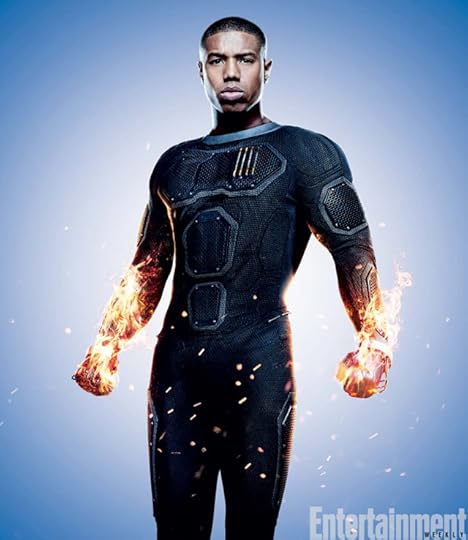
Mr. Jordan is an up and coming actor whose previous work has been praised. He’s also. for those who haven’t noticed in the picture of him above, an African American, just about the exact opposite of the Johnny Storm we’ve seen in print and movies since his first appearance in the first Fantastic Four comic way back in 1961.
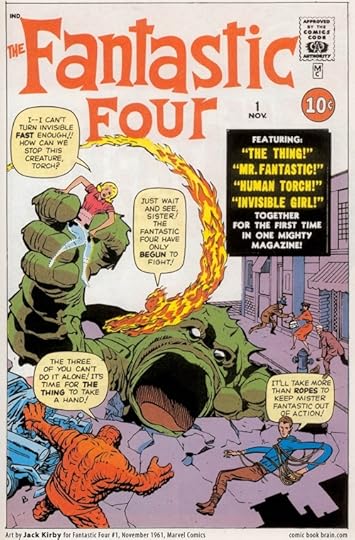
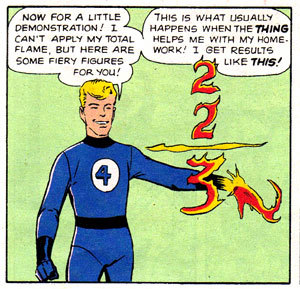
To make matters…stranger, Johnny Storm’s sister is fellow Fantastic Four member Sue Storm, aka The Invisible Girl/Woman. In the comics, she looks like her brother…
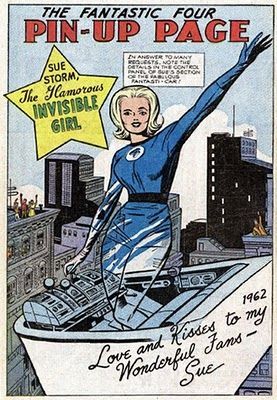
And in the upcoming movie, Sue Storm is being played by Kate Mara…

The explanation as to how Michael B. Jordan and Kate Mara are siblings, I believe, is that Sue Storm was adopted (Don’t hold me to that, I believe I read it in an article somewhere).
As mentioned, there has been some controversy generated by this casting, with some arguing that changing Johnny Storm from a white guy to an African American goes against the character’s very long history. To which others say “grow up”, that we’re living in a different society and this is a comic book character and showing him as being a different race than originally conceived doesn’t matter. What matters is showing the diverse culture that actually exists in this world.
To which I say yeah…but…
Sometimes, the character’s originally created race does matter with the work they are associated with.
Take for example the 1999 starrer Wild Wild West, a remake of the beloved The Wild Wild West tv show that aired from 1965 to 1969 and which featured in the title role.

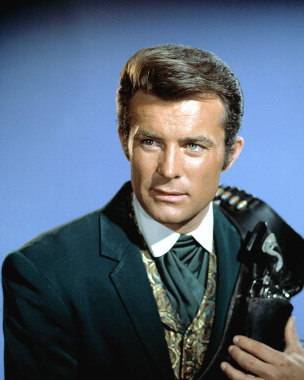
When I first heard the movie version of the TV show was in the works (and before it was released and almost universally panned), I couldn’t help but shake my head at the casting choice. Sure, Will Smith was at his very “hottest” at the time, having just appeared in Independence Day, Men in Black, and Enemy of the State. But having him in the role of James T. West, a U.S. Secret Service agent operating just after the end of the Civil War, made no sense at all. Not to put too fine a point on it, but I couldn’t help wonder how an African American would fare during that time and in that particular job. Yes, The Wild Wild West movie and TV show were strictly fantasy, but they nonetheless took place during a specific historical period, one in which it would be difficult, if not impossible, for an African American to be able to take and succeed in such a job/role.
In the case of the Fantastic Four movie, I believe switching the Human Torch’s race may be ok, but it does create a bit of confusion, specifically with regard to his “sister”, and I can’t help but wonder if doing so -and spending precious screen time explaining how exactly they’re siblings- will ultimately take away from the movie or not. I also couldn’t help but wonder why they didn’t just re-cast Sue Storm with an African American actress as well and avoid all the inevitable questions to follow.
In the case of The Equalizer, while the movie did echo elements of the TV show, I felt that changing the Robert McCall character from an ex-British agent to an ex-American agent changed the movie’s dynamic to a degree that I couldn’t help but wonder why they bothered calling it a remake at all.
In fact, rename Denzel Washington’s character from Robert McCall to Paul Kersey, remove the few elements of his being an ex-agent and the scene where he visits his old handlers, and you could just as easily convert this film into a remake of Charles Bronson’s Death Wish.
The point is this: The Equalizer was created with certain elements regarding the main character. So too, for that matter, was The Fantastic Four and The Wild Wild West. While one can applaud modern entertainment companies’ use of diverse races in their features, there may be times where it is better to simply create something “new” rather than do a remake that wanders too far afield of what the original work was about.



